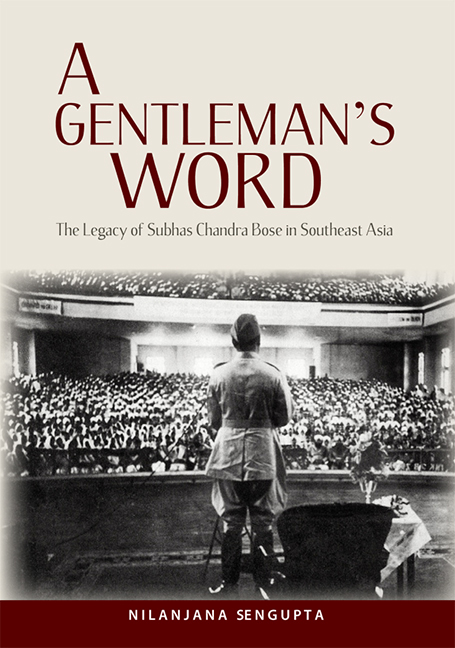Book contents
- Frontmatter
- Dedication
- Contents
- Foreword by S. R. Nathan
- Message by K. Kesavapany
- Message by Joyce C. Lebra
- Preface
- Acknowledgements
- 1 A Journey: A Dream
- 2 An Outsider in the Crescent and a Trial for Treason
- 3 End of a War, Beginning of Others
- 4 We are the Multitudes
- 5 “They Have Done Enough at Home”: Escape from the Shadows
- Bibliography
- Index
- About the Author
- Plate Section
- Frontmatter
- Dedication
- Contents
- Foreword by S. R. Nathan
- Message by K. Kesavapany
- Message by Joyce C. Lebra
- Preface
- Acknowledgements
- 1 A Journey: A Dream
- 2 An Outsider in the Crescent and a Trial for Treason
- 3 End of a War, Beginning of Others
- 4 We are the Multitudes
- 5 “They Have Done Enough at Home”: Escape from the Shadows
- Bibliography
- Index
- About the Author
- Plate Section
Summary
For me it all started with meeting three little old men at an Udipi restaurant on Serangoon Road, Singapore. Bala A. Chandran, Girish Kothari and Kishore Bhattacharya — all three in their eighties, with one of them having undergone an intestinal surgery in the recent past. I was chasing an article for a newspaper in Bombay for which I had already missed the deadline. As they filed in, refusing assistance from the young Tamil waitress and started speaking of their INA (Indian National Army) days, I noticed an unmistakable straightening of the shoulders and an Ancient Mariner like glitter in their eyes: it was that momentary transformation which sparked my interest in their story. Was it the easy camaraderie of old boys speaking of their alma mater? Around the same time I read another story of Laxmi Indira Panda of Orissa who had joined the Rani of Jhansi Regiment. After many frustrating trips down the corridors of power, she finally met the President of India when in her nineties. As she walked down the carpeted corridors of Rashtrapati Bhawan, she stopped to salute the pictures of national leaders. What was it about these men and women, I wondered, that made them less ordinary?
The 1940s was a decade of violence and trauma for Southeast Asian communities, as it was for the rest of the world. It began with the mass exodus of Burmese-Indian refugees in the face of Japanese invasion, witnessed the tragedy of Hiroshima and Nagasaki — the only nuclear holocausts the world has known and the ruthless massacre of the Chinese communities as they faced the fury of Japan's wartime atrocities. The war, when it finally ended, had systematically torn apart indigenous ecosystems of culture and tradition, of old habits and communal practices.
The INA, as a movement, placed a motley group of individuals against this bleak terrain. Remarkably, it was a group that transcended barriers of caste, religion or race. Even the small crosssection at Singapore that I had the opportunity to meet consisted of expatriate Indians from the far-flung states of Kerala, Gujarat and undivided Bengal.
- Type
- Chapter
- Information
- A Gentleman's WordThe Legacy of Subhas Chandra Bose in Southeast Asia, pp. xv - xxiiPublisher: ISEAS–Yusof Ishak InstitutePrint publication year: 2012

